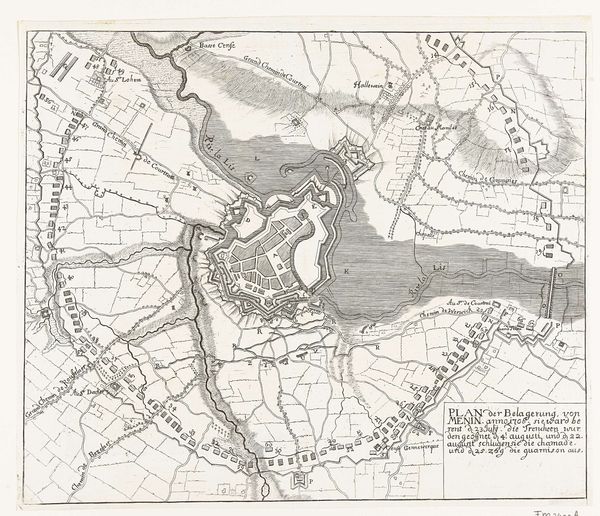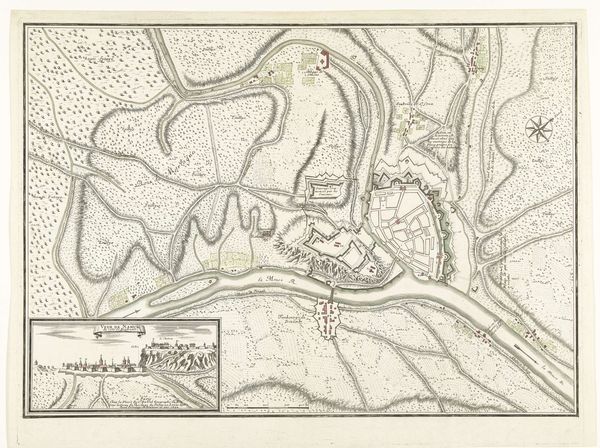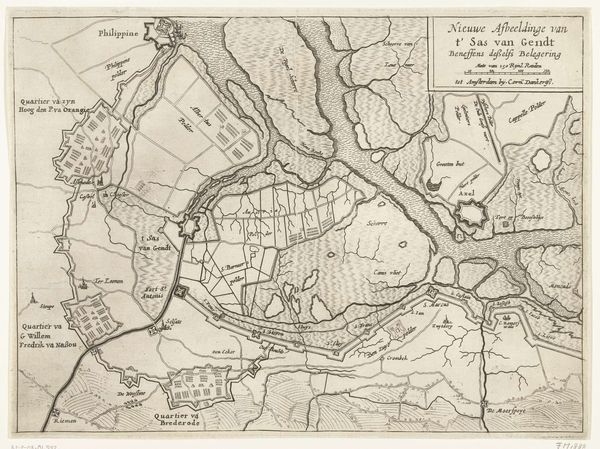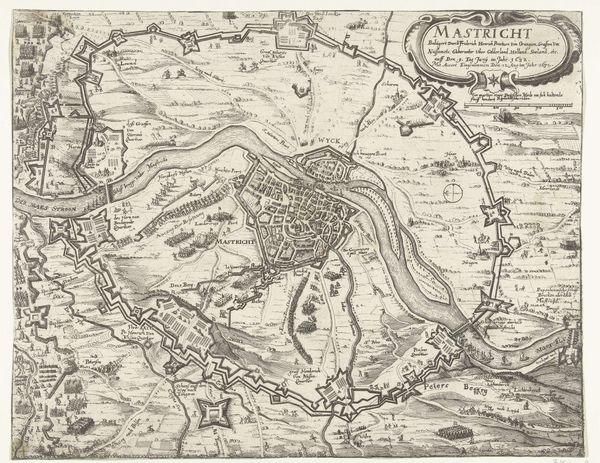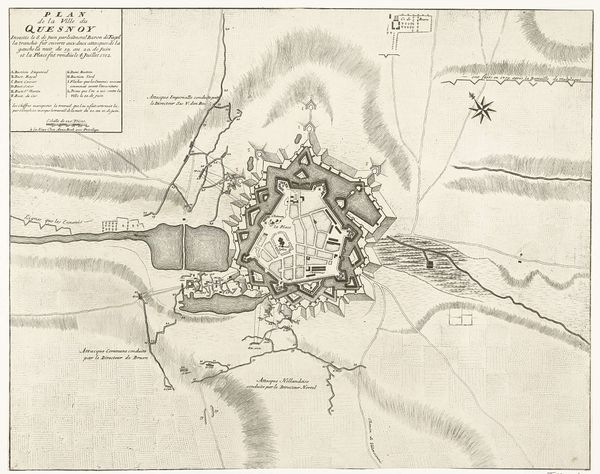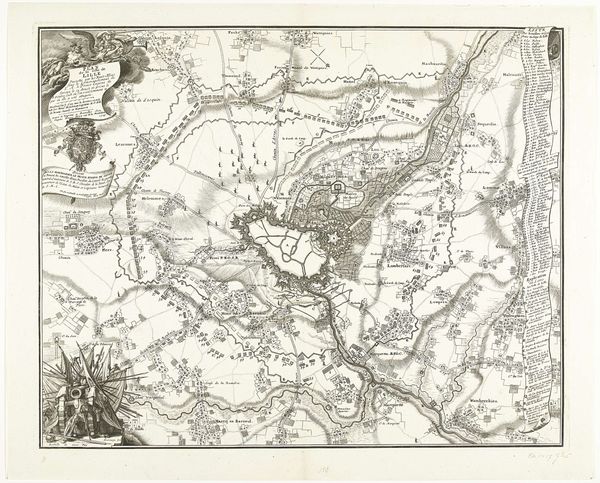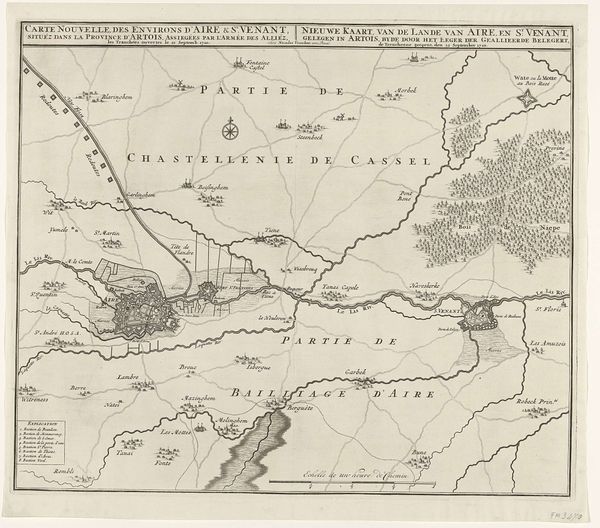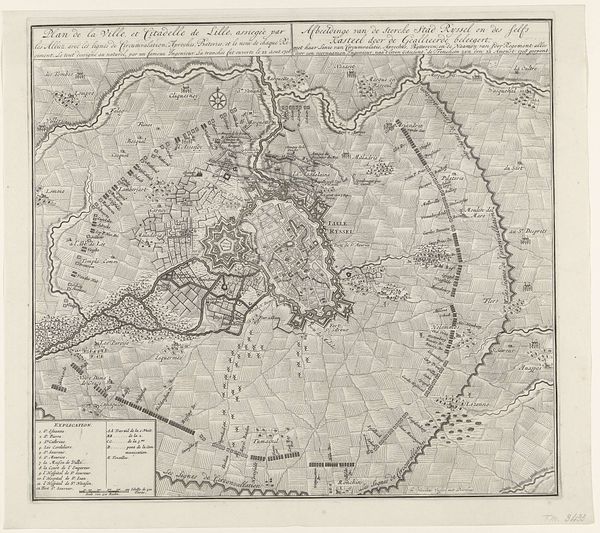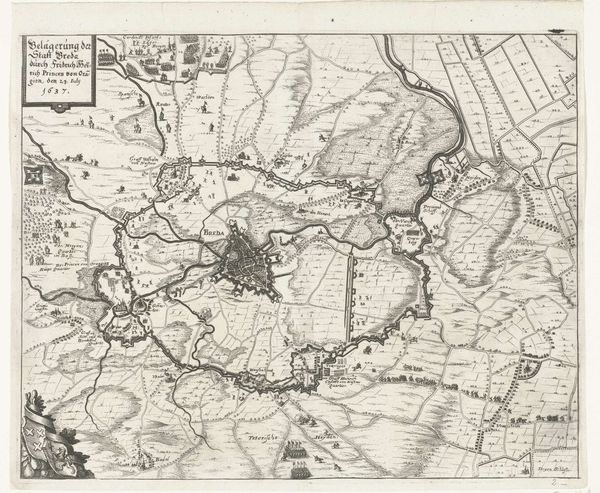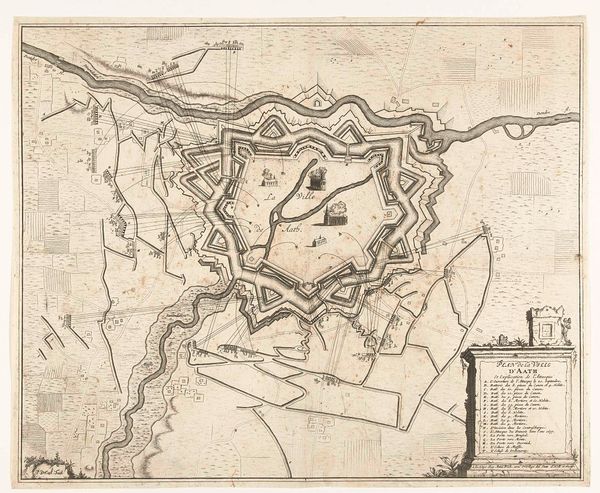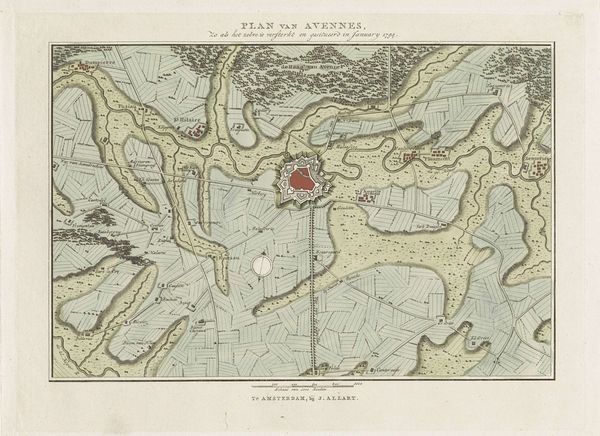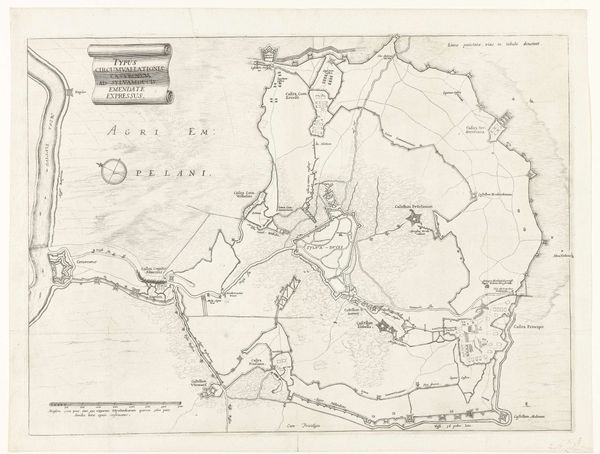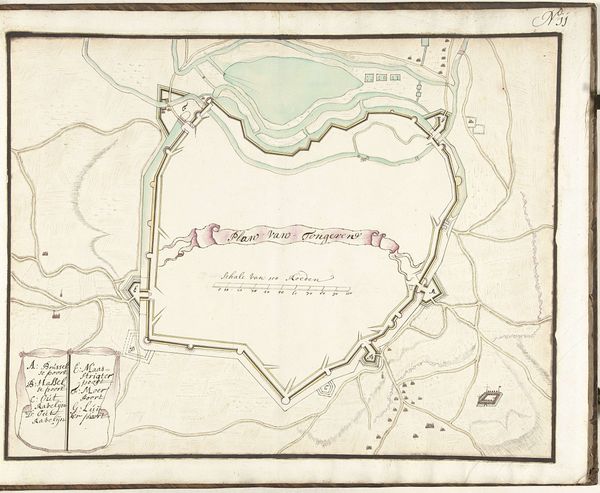
drawing, print, ink, engraving
#
drawing
#
medieval
# print
#
ink
#
geometric
#
cityscape
#
history-painting
#
engraving
Dimensions: height 323 mm, width 393 mm
Copyright: Rijks Museum: Open Domain
Curator: Here we have an intriguing engraving titled "Plan van het beleg van Lille, 1708," a depiction of the siege of Lille, held in the Rijksmuseum. Editor: My initial reaction is one of complexity and constraint. The city appears boxed in, the sharp lines suggesting an inescapable tension. I'm curious about the materials involved. Curator: Indeed, this is a print executed with ink, showcasing impressive detail through the engraving technique. Note the carefully rendered fortifications and the almost geometric organization of the landscape. Semiotics are key here; lines denote boundaries, and specific shapes form recognizable symbols of power and military strategy. Editor: The density of those lines! It speaks volumes about the labor involved in its production and I wonder about the printmaker's hands and their understanding of military logistics. It goes beyond mere craft; it’s a form of meticulous recording, each stroke laden with the context of war and the physical act of representation. What was the material availability like, and did it dictate the size of the piece? Curator: That’s an excellent point. Consider, also, the stark contrast between the structured inner city and the more organic rendering of the surrounding land. The contrast creates visual tension within the plane. It is about social and power hierarchies meticulously delineated by artistic expression. Editor: Absolutely, and I wonder how much agency the printmaker had in depicting those hierarchies. Was this created to celebrate victory, or to serve as a technical record? The materiality itself—the permanence of ink on paper—suggests a desire for a record meant to withstand time. The quality of materials indicates an intention beyond a quick battlefield sketch. Curator: Considering the detail and formality, the engraver possibly adhered to conventions while injecting symbolic intent. One could see this plan functioning within an almost architectural language. Editor: For me, analyzing it materialistically helps us appreciate it not just as a document of conflict but as evidence of historical labor, intentionality, and material resources employed during a violent, formative period. Curator: Examining this anonymous work through semiotics and a focus on visual structure highlights how form itself articulates power. It allows the viewer to understand both its technical and symbolic intent, transcending temporal context through its structural expression. Editor: And appreciating the artist’s physical investment alongside historical materials connects us directly to a moment of conflict interpreted through the practical labor involved in reproducing that context. Each reveals crucial dimensions to this print, expanding our understanding.
Comments
No comments
Be the first to comment and join the conversation on the ultimate creative platform.
